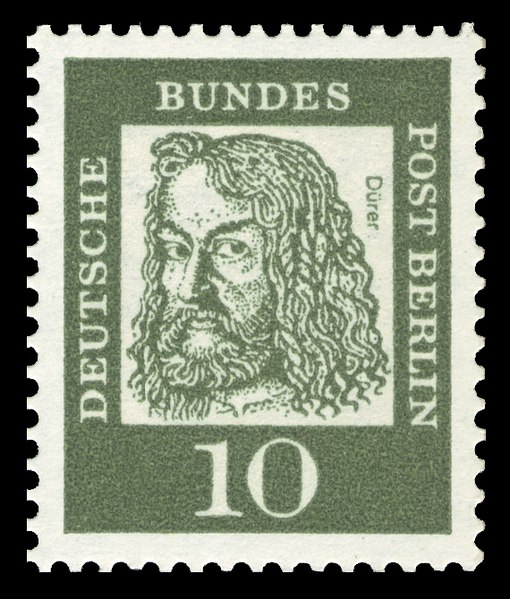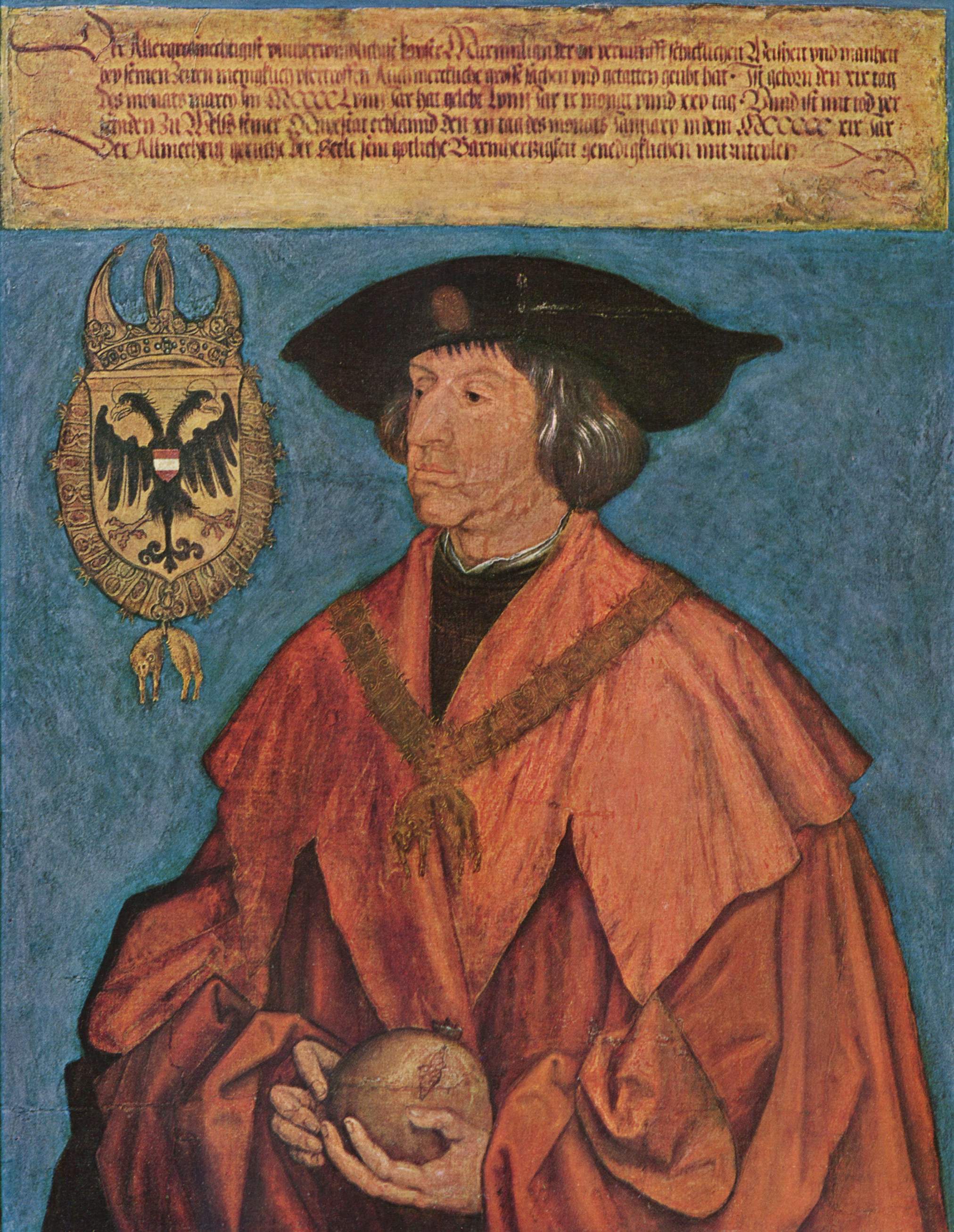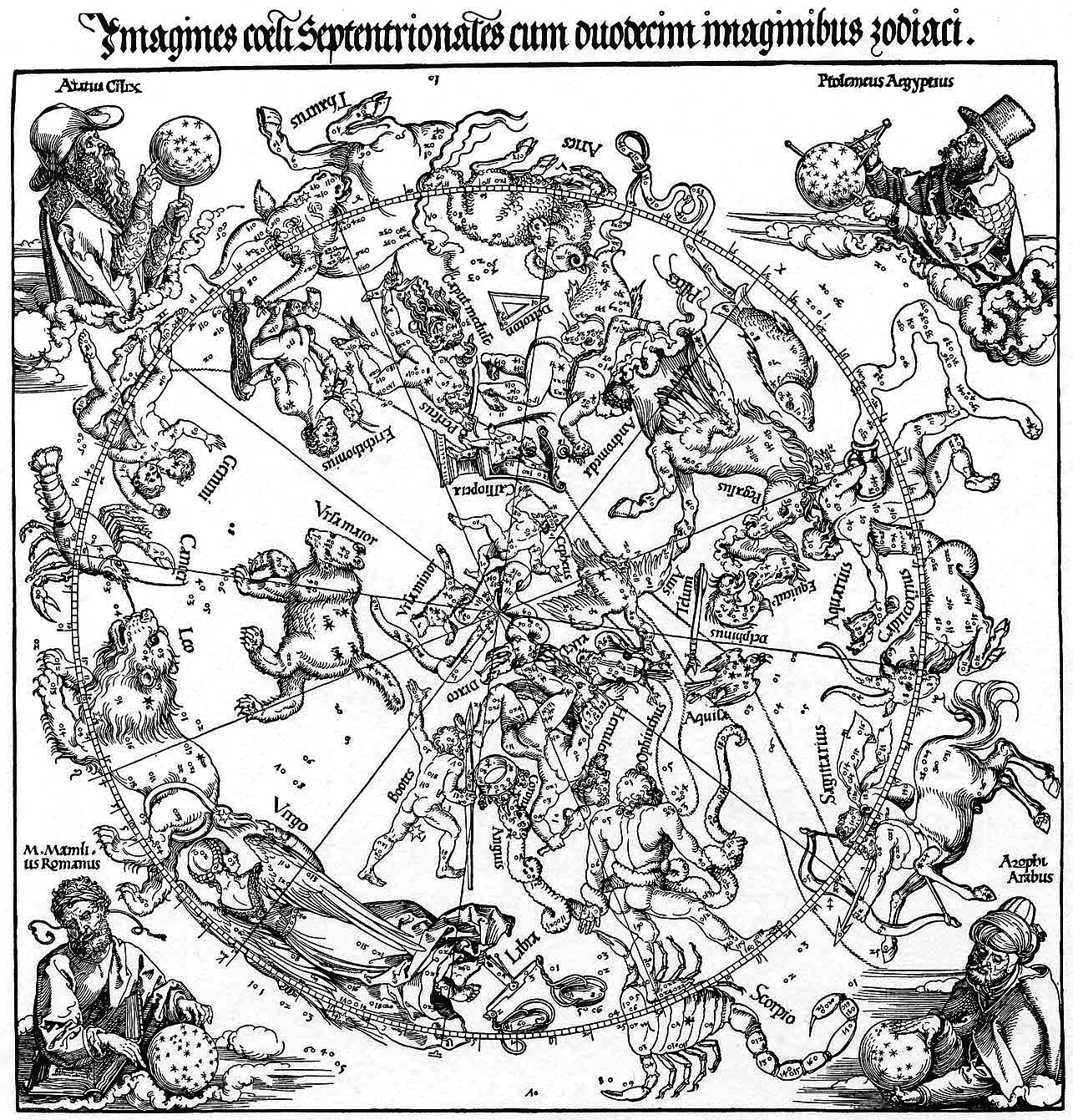Dürer's Rhinoceros, printed in Nuremberg, 1515
Translation of the above text (from German):
In the year 1513 since Christ's birth A.D., on May 1st, there was brought from India to the most puissant King Manuel of Portugal, in Lisbon, just such a living animal, that they call Rhinocerus. It is reproduced here in its complete form.
Its color is like a speckled turtle, and it is covered very securely with thick scales, and in size it is like the elephant, but shorter in the legs and very well fortified. It has a sharp strong horn on the front of the nose, which it takes to whetting wherever there are stones.
It is a triumphant animal, the elephant's deadly enemy. The elephant fears it terribly, because when he comes upon it, the animal runs at him with the head between the front legs, and tears the elephant's belly from beneath, and that suffocates him, who could not defend himself. For the animal is so well armed, that the elephant can do nothing to him.
They also say, that the Rhinocerus is quick, glad-tempered, and also lusty.
--------
Okay, so he didn't get the rhino exactly right -- most rhinos, even in the sixteenth century, didn't have scales on their legs or a back-horn. But give ol' Albrecht a break, he never even saw the animal! (After visiting the king of Portugal, he sent the rhino on to the Pope, but the beast, sadly, died when its ship went down in the Mediterranean.)
So what business did this German guy have engraving a rhino -- five hundred years ago?
Albrecht Dürer, born in 1471 in Nuremburg in the Holy Roman Empire (modern-day Germany), was perhaps the most renowned artist and woodcutsman of the northern European Renaissance. Which, I guess, is pretty impressive, if you like woodcuts, which I most certainly do.
A little more about Dürer: He was descended from those notorious raiders from the Asian steppe, the Hungarians, but his dad, when moving to the HRE, changed the name from Ajtosi to Dürer ("door-maker"). (Mysteriously, no one in the family knew how to make a door, and one had to enter the handcrafted Dürer house by a ladder up to the first-floor window.)
His father, a goldsmith, trained him in the craft, and Dürer also learned drawing and engraving. It is even thought he might have worked on the illustrations for the 1493 Nuremburg Chronicle, the subject of another Cabinet post. After his apprenticeship, he traveled to the Netherlands and Italy, returning to Nuremburg in 1495. Dürer set up his own studio upon his return, and he quickly achieved renown for the engravings, woodcuts, and paintings his shop produced.
In 1512, Dürer's secured the artistic patronage of the Hapsburg Holy Roman Emperor Maximilian I, grandpa to his future patron, the bad-ass "Lantern-jawed Lord of Europe" Charles V. By the 1520s, however, Dürer suffered from arthritis (sadly, four centuries before the invention of the ion bracelet) and also (secretly) from Lutheranism. (He remained a staunch Catholic, though, until his death, in 1528.)
During the five centuries after his death, Dürer's critical reputation has remained as solid as a loaf of black German bread. But enough biographical nonsense, let's get to the images (from my personal collection, of course)!
No mere Rhinophile, Dürer was an equal-opportunity animal artist. This pen and ink portrait is Die Kleine Eule (The Little Owl) from 1508.
Dürer loved a good Buchabbildung, like this illustration from the 1494 satirical poem Das Narrenschiff (The Ship of Fools). Only a crew of foolhardy souls would put to sea in such a clown-car-sized boat.
The effect of numerous German Winters: Melancolia I, from 1514.
I don't even know what's going on in this one. The Knight, the Devil, and Death, from 1513.
Dürer's patron, Maximilian I of the HRE, from 1519. In the nineteenth century, the portrait was misidentified as a possible likeness of Christopher Columbus.
A true Renaissance man, our Albrecht kept up with the latest astrolomical research, even producing this Sternenkarte (star map).
Christ visits Limbo (in 1512?). Watch out for those demon-cats, Jesus!
Dürer was an art theorist and teacher, and, in produced several conversation pieces demonstrating perspective, including this: An Illustration of Perspective Drawing, date unknown.
Well, folks, I'll restrain myself from sharing with you all the awesome copyright-free Dürer art you can get online. I hope you've enjoyed this installment of Sister Carmichael's Gallery Talks. In the words of the estimable Dr. Levardis Robert Martyn Burton, Jr., "I'll see you next time."





.jpg)




Dear Professor
ReplyDeleteLove your site! If I may, I will show this first page to my college class of non-art majors to introduce them to black and white drawing and as I always do, Durer, one of my favorites.
Deborah Urban Steytler
Ohio
Thanks ever so much, Deb! Glad you enjoyed it!
Delete